This is the former central post office, built in the inter-war years to serve the fast-growing town of Loughton.Named after the oak tree planted on the green at Fullwell Cross, in 1951, the original Fairlop Oak was blown down in 1820. In 1909, a new oak was planted in the recreation ground, on the site thought to be that of the former tree.
Photographs and an article about The State cinema.
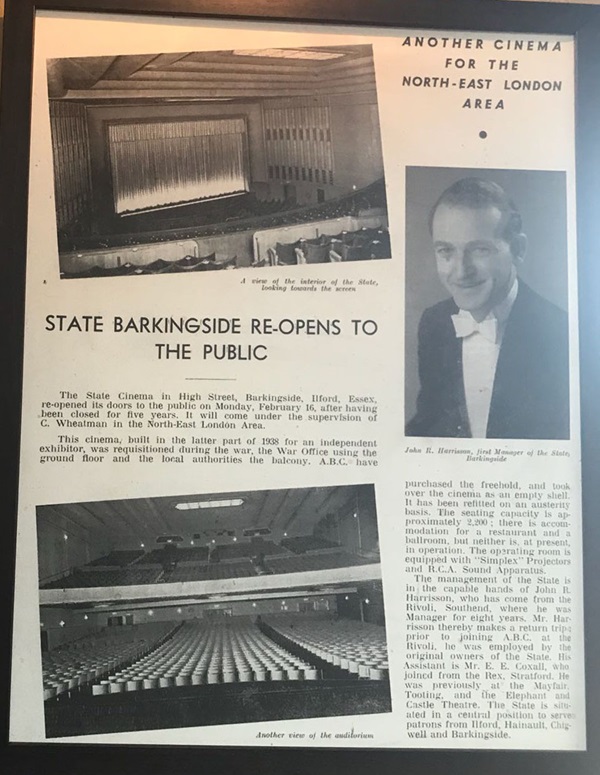
The article reads: The State cinema in High Street, Barkingside, Ilford, Essex, re-opened its doors to the public on Monday February 16, after having been closed for five years. It will come under the supervision of C Wheatman in the north east London area.
This cinema, built in the latter part of 1938 for an independent exhibitor, was requisitioned during the war, the War Office using the ground floor and the local authorities the balcony. A.B.C have purchased the freehold, and took over the cinema as an empty shell. It has been refitted on an austerity basis. The seating capacity is approximately 2,200; there is accommodation for a restaurant and a ballroom, but neither is at present, in operation. The operating room is equipped with ‘Simplex’ Projectors, and R.C.A Sound Apparatus.
The management of the State is in the capable hands of John R. Harrison, who has come from Rivoli, Southend, where has was the manager for eight years. Mr Harrison thereby makes a return trip prior to joining A.B.C. at the Rivoli, he was employed by the original owners of the state. His assistant is Mr EE Coxall, who joined from the Rex, Stratford. He was previously at the Mayfair, Tooting, and the Elephant and Castle Theatre. The State is situated in a central position to serve patrons from Ilford, Hainault, Chigwell and Barkingside.
Photographs and text about Sarah Louise Elmslie – ‘Syrie’.
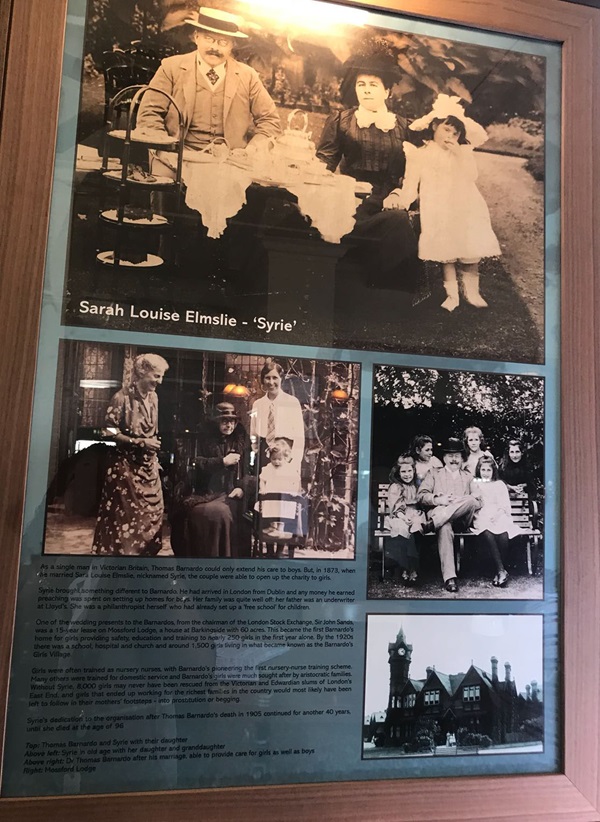
The text reads: As a single man in Victorian Britain, Thomas Barnardo could only extend his care to boys. But, in 1873, when he married Sara Louise Elmslie, nicknamed Syrie, the couple were able to open up the charity to girls.
Syrie brought something different to Barnardo. He had arrived in London from Dublin and any money he earned preaching was spent on setting up homes for boys. Her family was quite well off: her father was an underwriter at Lloyd’s. She was a philanthropist herself who had already set up a ‘free school’ for children.
One of the wedding presents to the Barnardo’s, from the chairman of the London Stock Exchange, Sir John Sands, was a 15-year lease on Mossford Lodge, a house at Barkingside with 60 acres. This became the first Barnardo’s home for girls providing safety, education and training to nearly 250 girls in the first year alone. By the 1920s there was a school, hospital and church and around 1,500 girls living in what became known as the Barnardo’s Girls Village.
Girls were often trained as nursery nurses, with Barnardo’s pioneering the first nursery-nurse training scheme. Many others were trained for domestic service and Barnardo’s girls were much sought after by aristocratic families. Without Syrie, 8,000 girls may never have been rescued from the Victorian and Edwardian slums of London’s East End, and girls that ended up working for the richest families in the country would most likely have been left to follow in their mothers’ footsteps – into prostitution or begging.
Syrie’s dedication to the organisation after Thomas Barnardo’s death in 1905 continued for another 40 years, until she died at the age of 96.
Top: Thomas Barnardo and Syrie with their daughter
Above, left: Syrie in old age with her daughter and granddaughter
Above, right: Dr Thomas Barnardo after his marriage, able to provide care for girls as well as boys
Right: Mossford Lodge
Prints and text about Fairlop Fair.
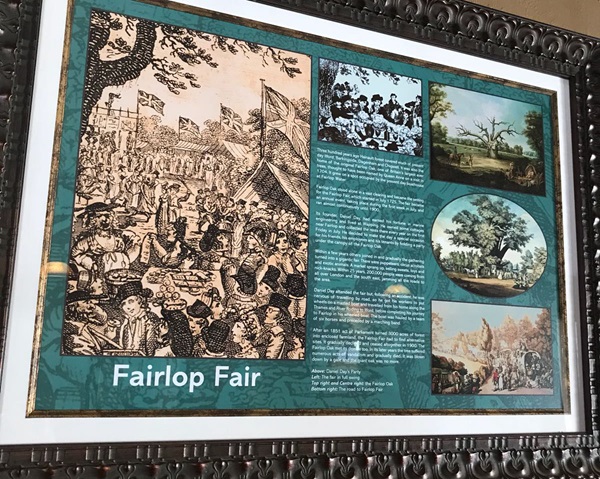
The text reads: Three hundred years ago Hainault forest covered much of present day Ilford, Barkingside, Dagenham and Chigwell. It was also the home of the original Fairlop Oak, one of Britain’s largest ever trees, thought to have been named by Queen Anne on a visit in 1704. It grew on a spot occupied by the present day boathouse at Fairlop Water.
Fairlop Oak stood alone in a vast clearing and became the setting for the Fairlop Fair, which started in July 1725. The fair became an annual event, taking place during the first week in July, and ran almost continuously until 1900.
Its founder, Daniel Day, had earned his fortune in marine engineering and lived at Wapping. He owned some cottages near Fairlop and collected the rents there every year on the first Friday in July. He decided to make the day a special occasion for his friends, is employees and his tenants by holding a party under the canopy of the Fairlop Oak.
Within a few years others joined in and gradually the gathering turned into a gigantic fair. There were puppeteers, circus acrobats and exotic animals. A market sprang up, selling sweets, toys and nick-knacks. Within 25 years, 200,000 people were coming from all over London and the south east, jamming all the roads of the area.
Daniel Day attended the fair but, following an accident, he was nervous of travelling by road, so he got his workers to put wheels on a masted boat and travelled from his home along the Thames and River Roding to Ilford, before completing his journey to Fairlop in his wheeled boat. The boat was hauled by a team of six horses and preceded by a marching band.
After an 1851 act of Parliament turned 3,000 acres of forest into enclosed farmland, the Fairlop Fair had to find alternative sites. It gradually declined and ceased altogether in 1900. The Fairlop Oak met its demise too. In its later years the tree suffered numerous acts of vandalism and gradually died. It was blown down by a gale and the giant oak was no more.
Above: Daniel Day’s party
Left: The fair in full swing
Top right and centre right: the Fairlop Oak
Bottom, right: The road to Fairlop Fair
Photographs, prints and text about Fairlop’s famous oaks.
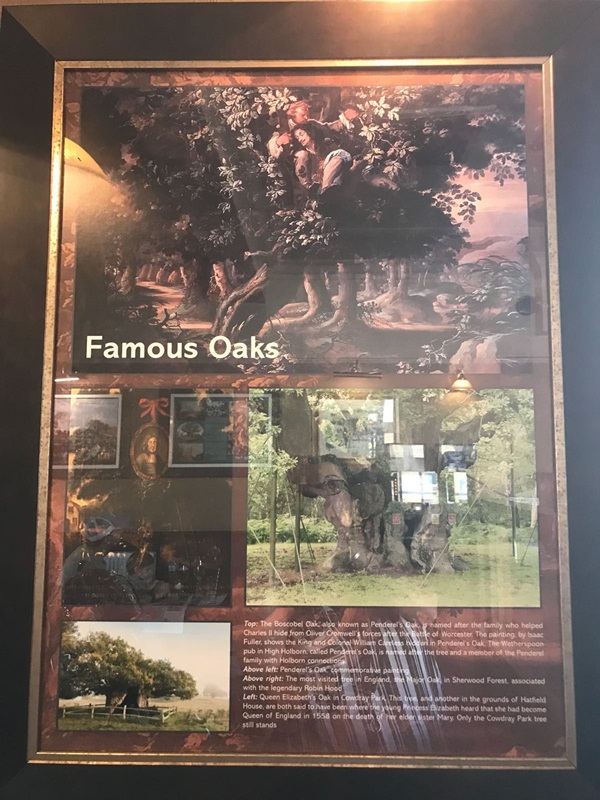
Top: The Boscobel Oak, also known as Penderel’s Oak, is named after the family who helped Charles II hide from Oliver Cromwell’s forces after the Battle of Worcester. The painting by Isaac Fuller, shows the King and Colonel William Careless hidden in Penderel’s Oak. The Wetherspoon pub in High Holborn, called Penderel’s Oak, is named after the tree and a member of the Penderel family with Holborn connections.
Above left: Penderel’s Oak, commemorative painting.
Above, right: The most visited tree in England, the Major Oak, in Sherwood Forest, associated with the legendary Robin Hood.
Left: Queen Elizabeth’s Oak in Cowdray Park. This tree, and another in the grounds of Hatfield House, are both said to have been where the young Princess Elizabeth heard that she had become Queen of England in 1558 on the death of her elder sister Mary. Only the Cowdray Park tree still stands.
Photographs and text about Ken Aston.
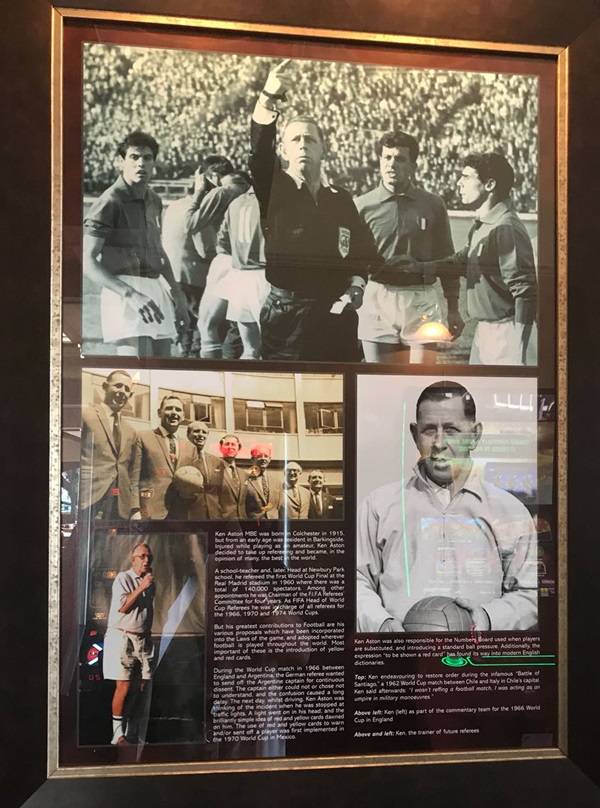
The text reads: Ken Aston MBE was born in Colchester in 1915, but from an early age was a resident in Barkingside. Injured while playing as an amateur, Ken Aston decided to take up refereeing and became, in the opinion of many, the best in the world.
A school-teacher and, later, head at Newbury Park school, he refereed the first World Cup Final at the Real Madrid stadium in 1960 where there was a total of 140,000 spectators. Among other appointments he was Chairman of the FIFA Referees’ Committee for four years. As FIFA Head of World Cup Referees he was in charge of all referees for the 1966, 1970 and 1974 World Cups.
But his greatest contributions to Football are his various proposals which have been incorporated into the Laws for the game, and adopted wherever football is played throughout the world. Most important of these is the introduction of yellow and red cards.
During the World Cup match in 1966 between England and Argentina, the German referee wanted to send off the Argentine captain for continuous dissent. The captain either could not or chose not to understand, and the confusion caused a long delay. The next day, whilst driving, Ken Aston was thinking of the incident when he was stopped at traffic lights. A light went on in his head, and the brilliantly simple idea of red and yellow cards dawned on him. The use of red and yellow cards to warn and/or send off a player, was first implemented in the 1970 World Cup in Mexico.
Ken Aston was also responsible for the Numbers Board used when players are substituted, and introducing a standard ball pressure. Additionally, the expression “to be shown a red card” has found its way into modern English dictionaries.
Top: Ken endeavouring to restore order during the infamous Battle of Santiago, a 1962 World Cup match between Chile and Italy in Chile’s capital. Ken said afterwards: “I wasn’t reffing a football match, I was acting as an umpire in military manoeuvres.”
Above left: Ken (left) as part of the commentary team for the 1966 World Cup in England
Above and left: Ken, the trainer of future referees.
An old photograph of Mrs Shade’s tea tent.
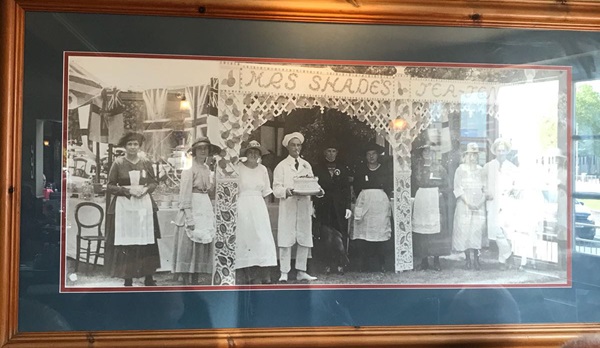
A print of Fairlop Fair, by Charles Robert Leslie, c1820.
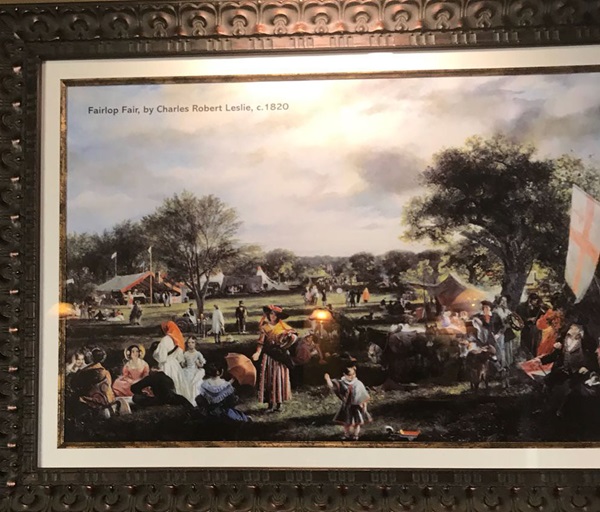
External photograph of the building – main entrance.
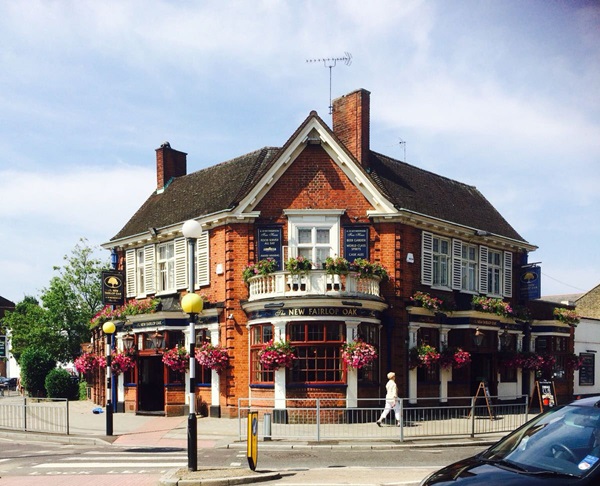
If you have information on the history of this pub, then we’d like you to share it with us. Please e-mail all information to: pubhistories@jdwetherspoon.co.uk